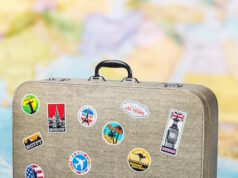
Most people don’t like packing and hauling boxes from one home or apartment to another, but the thought of a long-distance move is even more dreadful. It doesn’t have to be that way; however, no matter how far you’re moving, how many boxes you have to pack or who’s coming along for the trip.
The Planning Stage
While it may look like you have an endless amount of work to do when you first get started, as soon as you get organized, everything will come into a new perspective. Give yourself plenty of time, from start to finish, without procrastinating. Doing a few things every day will keep you on target and prevent a lot of last-minute stress:
- Make a moving list of everything you need to accomplish.
- Get estimates and dates from a moving company, if you intend to use one.
- Put together a budget for your move, including everything from boxes for packing to burgers on the road.
- Estimate your last day of work in the area and inform your employer.
- Determine where and when you’ll start working at your new location, and where and when your kids will be schooled.
Your plan should be completed as early as possible; however, it also needs to be put into action quickly. It’s easy to forget or overlook details, but the more time you have to work with, the less likely you’ll be to miss anything important.
The Packing Stage
Even if you hire a company to help with the packing, you’re still going to need to organize and direct people and to keep some items left out for use before the move happens. Also, you need to mark a few boxes as “important,” so you know to unpack them right away or situate them for quick access.
If you’re packing yourself, give yourself a weekend or more, with nothing else to do but pack:
- Shop for boxes, tape, packing-peanuts and everything else you’ll need.
- Set aside what you won’t be taking with you for a yard sale or donating to a local charity.
- Pack off-season items (you know you won’t need) right away, setting the boxes aside.
- Separate things you will use before you move, and then get packing on everything else, labeling every box.
- Prepare your furniture, such as disassembling, protecting with blankets, and so on.
Expect the unexpected and to have at least a few interruptions as you try to take care of everything. If you’re well-prepared, though, none of those things will get in the way of your master moving plan.
Other Details to Take Care Of
Working from your original list of things to do, keep checking as you pack and prepare. New things are likely to present themselves, throwing curveballs your way throughout the process.
If you have a pet, create a separate section on your list just for them, so you know they’re taken care of. They may need food along the way, a transcript of vet records and any prescriptions filled.
Children, too, should have their section on your to-do list, to ensure you take care of school records, pediatrician transfers, and so on. Every aspect of your life comes down to that list, so keep it active and always know where to find it. Along with whatever other things you’ll need to do, there are a few necessary things, no matter what your circumstances are:
- Contact your current utility companies, informing them of the shut-off date.
- Notify your future utility companies of when you’re moving in and make sure you cover any deposits they’ll need.
- Make a list of other vital facilities in the new neighborhood, like a vet, dentist, physician, and more.
Making the Actual Trip
Whether you’ve contracted a long distance mover or not, when the day to make the actual trip has arrived, you must be ready for anything. Since you have a plan and are working from a smart list, though, you should have everything under control:
- If you’ve hired a moving company, coordinate your arrival at the new home to precede theirs.
- Have the vehicle you’re driving inspected for any issues, such as brakes, air-conditioning, and tires.
- Stock up on beverages and snacks for the ride.
- Map out any stops you’ll be making for fuel, food, and rest.
- Add extra coverage to your insurance policy to cover the move.
Unpacking In Your New Place
Take note of the boxes you’ve labeled as “important” and unpack them right away. Items for cooking, cleaning, and personal hygiene should be easily accessible to everyone in the family. Hauling the furniture inside should take priority, too, so nobody has to maneuver heavy items around awkward piles of boxes and other things in the way. Once the larger items are set up in the new place, try to bring boxes into the rooms their contents will be used for. This is when you’ll see how useful it is to label, label, label.
It may be a good idea to stop at a local grocery store and grab a few microwavable meals, or, if your budget allows, take everyone out to eat. You’re all going to be very tired, probably cranky, but still in need of some decent food.
Once the most important things have been unpacked, it’s up to you how quickly all boxes are emptied and when cleanup begins. Wait until the empty boxes are gone to decorate and hang curtains, to minimize the risk of trips and falls.
With a strategic plan, discipline, and everyone working together, you can make a long-distance move much less stressful. Working with a moving company or all on your own, you’re in control of your destiny.












